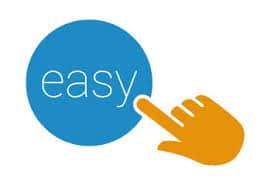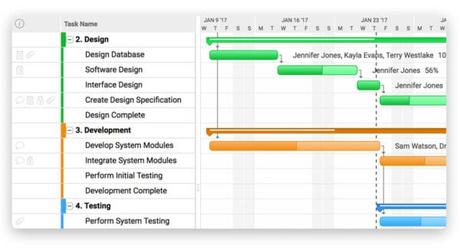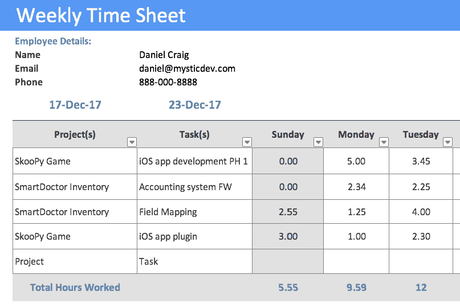More and more project managers are getting involved in selecting a project management tool. Which makes sense - after all, project managers are the people who will use the product on a day-to-day basis. They will also have strong views about what the software should do and how it can help them manage their projects.

We've compiled a list of tips on what should help you decide on the best project management software for you.

First, you need to make sure that whatever software you invest in is easy to use! It should go without saying, but some tools are very complicated, and users require several days of training. The best product for you will be something that you find straightforward to use, and that will suit your team. Many tools offer free trials so you'll get to see what it is like working in the software before committing to buy it.

2. Scheduling Tools
If you want to be able to manage your projects efficiently, you'll need professional-grade scheduling tools like Gantt chart software. Many essential products won't display your project plans in a Gantt chart format and will merely show you a list of tasks. While that might be OK for very small projects with a tiny team, as soon as you start to manage anything even a little bit complicated you'll need more than that, so look for it now.
3. Task Management
A task list is the start of all Gantt charts, so you'll need task management features too. This should also include the ability to assign tasks to others in the team so that they know what work they should focus on.
You should be able to order tasks in ways that make sense to you. That means grouping them and adding target completion dates. The ability to send out email alerts to the person responsible for completing the work is another bonus!

4. Ability to Share Externally
Sharing your plans and tasks with team members in your company is one thing; however also look for the functionality which makes project data available to people outside your business. This is especially useful when it comes to working with contractors and third parties. It's also another reason why cloud-based online software is so popular and useful.
5. Real-Time Reporting

Save yourself some time by finding a product that has real-time reporting. This will pull data from various areas of the project management software and use it to produce reports that reflect the current status of the project.
6. Dashboards and Graphical Reports
While we're on the subject of reports, something that will show your reports in a graphical format is often handy. It might not be the deciding factor when it comes to choosing a tool, but in my experience, many stakeholders and sponsors respond best to dashboards and charts over written reports. Look for a tool that has built-in dashboards that can be tailored for each stakeholder.
7. Security
Functionality is all well and good, but if your data isn't safe, then the integrity of your project isn't either. Check out the security options offered by your preferred software provider. If they are hosting your software online, make sure they have 128-bit encryption. Use a separately dedicated hosting platform to keep your customer data safe and secure from everyone else's.
8. Professional Interface
There are so many tools out there, but some look quite old-fashioned. Your primary criteria for choosing a software product should be functionality. However, it doesn't hurt to go for something that looks attractive. You'll like using it, and your colleagues will think you are cutting edge!
9. Customizable
Lots of reports out of the box feature is great, but it's even better to have the ability to customize your experience with custom exports and fields. You should be able to make small changes to the look of the tool to let it reflect your working preferences. Some will allow you to upload logos, change colors and so on. The most important areas for customization are reports and data columns. These give you flexibility in how you want to show information to your stakeholders. In turn, providing you knowledge about what needs to be managed on the project.
10. Timesheets
Finally, lookout for a project management tool that includes time-sheets. These might not be a popular choice with your team, but they will help you keep track of tasks. They provide early warnings about delays and also let you check the validity of your task estimates. Go for a product that makes it easy for your team to complete their time-sheets. For example, one that lets you copy the tasks and activities from the previous week.
Below is a small example of how a timesheet may look like:

The rest is up to you, with (literally) hundreds of project management tools, you're spilled for choice.
